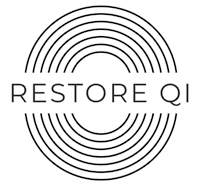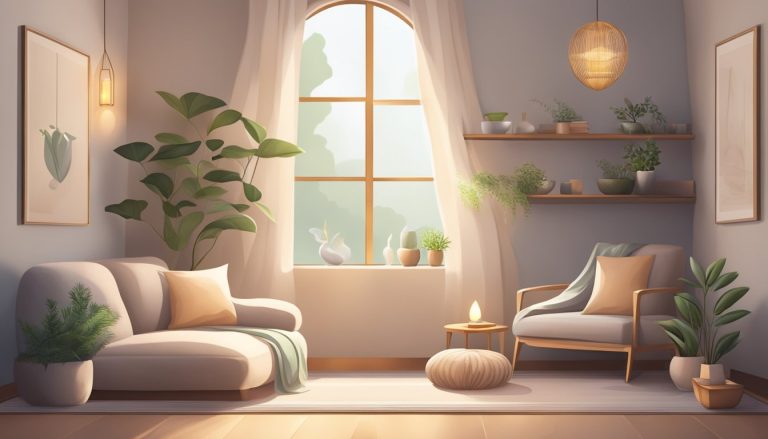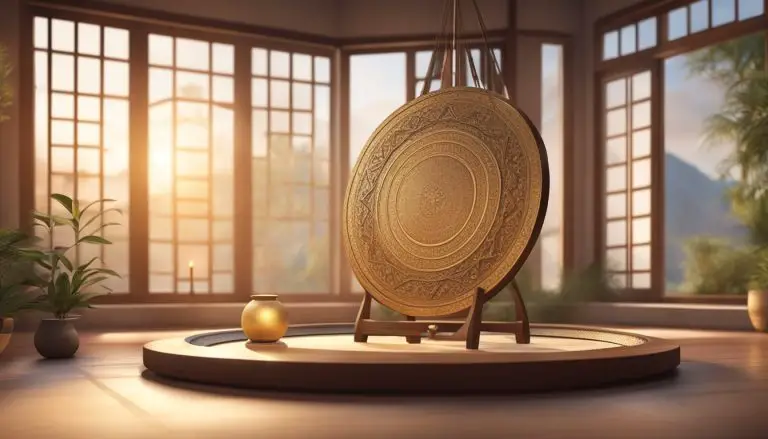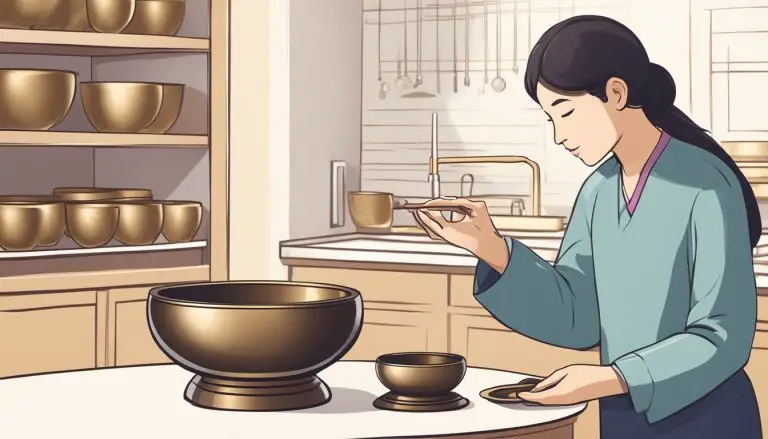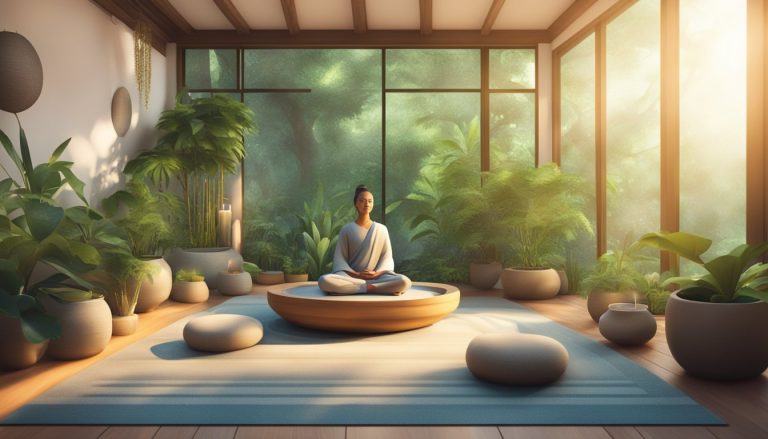What Goes on a Buddhist Meditation Altar?: A Simple Guide
Meditation has become an increasingly popular practice in recent years, and for many, it is an essential part of their daily routine.
For those who follow the Buddhist tradition, setting up a meditation altar is a way to create a sacred space in their home where they can connect with their practice.
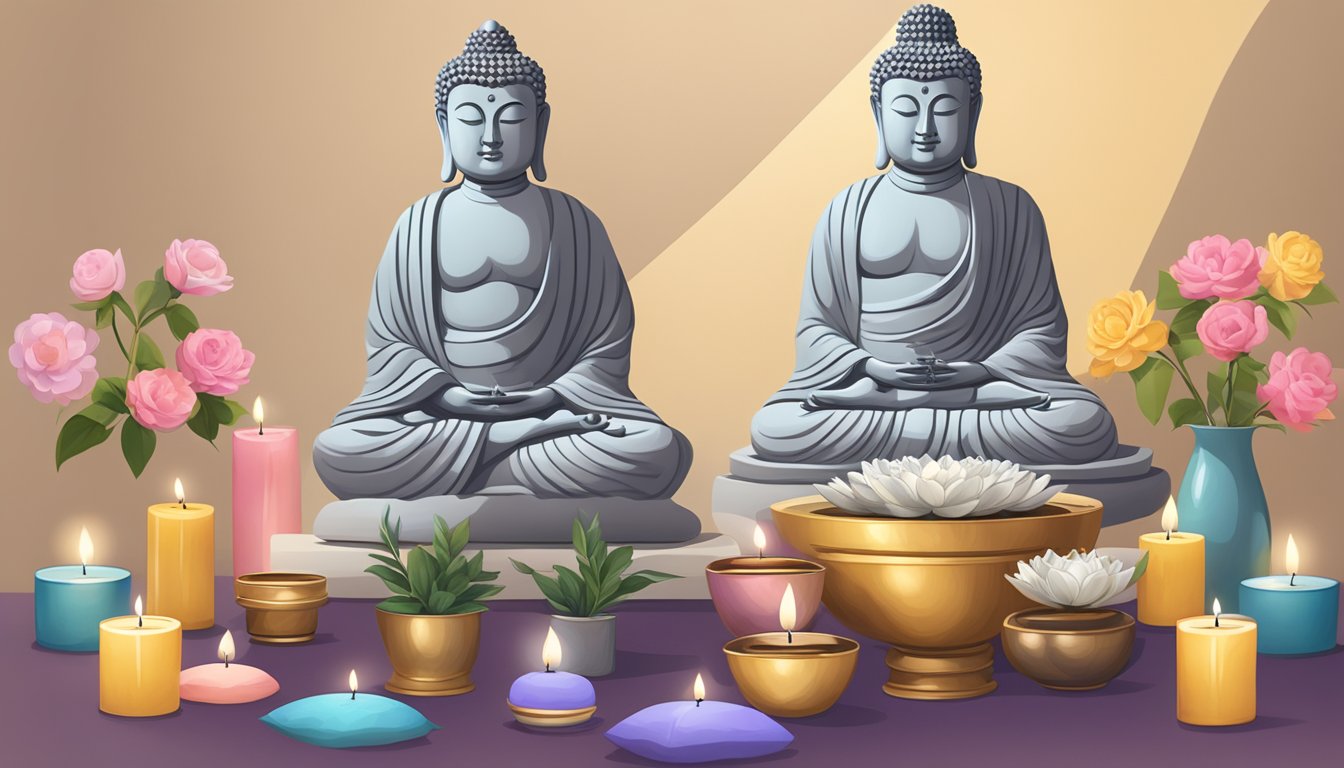
A Buddhist meditation altar serves as a focal point for meditation, reminding practitioners of their intention to cultivate mindfulness and compassion. It is a physical representation of the inner journey that one takes during meditation, and as such, it should be treated with reverence and care.
In this article, I will provide guidance on what goes on a Buddhist meditation altar, including essential items, symbolism, and personal touches. I will also discuss how to maintain and honour your altar, as well as how to expand your practice through your meditation space.
Table of Contents
Setting Up Your Meditation Altar
As a Buddhist, having a meditation altar in your home can be a great way to create a sacred space for your practice. In this section, I will guide you on how to set up your meditation altar.
Choosing the Right Location
The first step in setting up your meditation altar is choosing the right location. It is important to choose a quiet and peaceful location in your home where you can focus on your meditation practice. It could be a corner of your bedroom, living room or any other space that feels comfortable and calming to you.
Selecting an Altar Table or Shelf
The next step is selecting an altar table or shelf. You can choose any table or shelf that fits your space and style. It should be big enough to hold the items you want to place on it, but not too big that it takes up too much space in your room. You can also choose to build your own altar table or shelf if you want to add a personal touch to it.
On your altar table or shelf, you can place items such as a Buddha statue, candles, incense, flowers, and a cushion. These items can help create a sacred space and enhance your meditation practice. It is important to keep your altar clean and tidy, and to only place items that have a special meaning to you.
In conclusion, setting up a meditation altar in your home can be a great way to create a sacred space for your practice. By choosing the right location and selecting an altar table or shelf, you can create a space that is calming and inviting. Remember to keep your altar clean and tidy, and to only place items that have a special meaning to you.
Essential Items for Your Altar
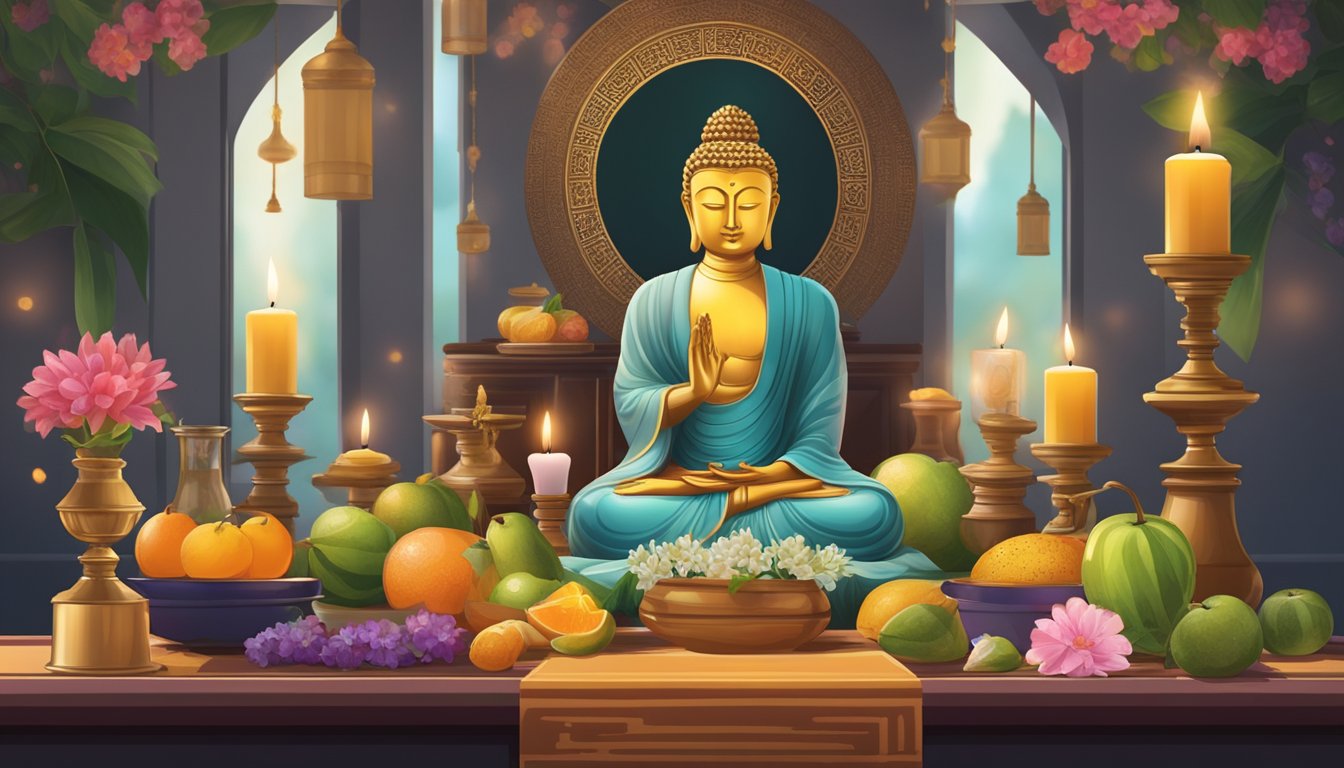
When setting up a Buddhist meditation altar, there are a few essential items that you should consider including. Here are some of the most important items that I recommend for your altar:
Statues and Images
A Buddha statue or image is a common feature on a Buddhist meditation altar. It serves as a reminder of the teachings of the Buddha and helps to create a peaceful atmosphere. You can choose from a variety of different Buddha statues, each with its own symbolism and meaning. Some popular options include the Buddha in meditation, the Buddha of compassion, and the laughing Buddha.
Candles and Lighting
Candles and lighting are also important for creating a calming atmosphere on your altar. You can use candles to represent the light of wisdom or enlightenment. You may also use tea lights or other small candles to represent the offerings that you make on your altar. In addition to candles, you may also want to consider using soft lighting or natural light to create a peaceful ambiance.
Offering Bowls and Water
Offering bowls and water are another important feature of a Buddhist meditation altar. You can use offering bowls to make offerings of water, flowers, or other items to the Buddha or other deities. Water is often used because it represents purity and clarity of mind. Offering bowls can be made from a variety of materials, including metal, wood, or ceramic.
In conclusion, these are just a few of the essential items that you may want to consider including on your Buddhist meditation altar. By creating a peaceful and calming atmosphere, you can help to focus your mind and deepen your meditation practice.
Incorporating Symbolism and Personal Touches
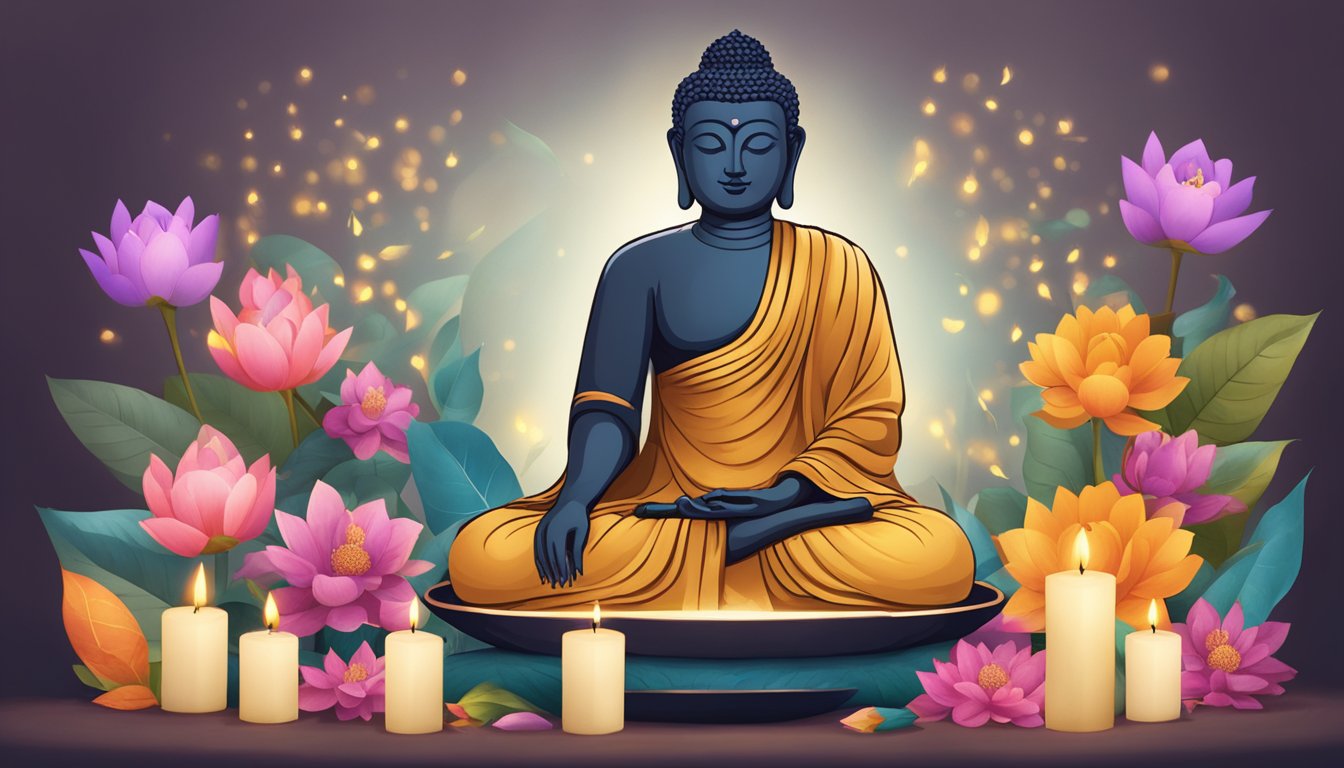
As a Buddhist, I find that having a meditation altar is an essential part of my spiritual practice. It serves as a focal point for my daily practice and helps me to cultivate a sense of calm and inner peace. In this section, I’ll share some ideas on how to incorporate symbolism and personal touches into your meditation altar.
Representing the Elements
One way to add symbolism to your meditation altar is to represent the elements. Traditionally, the elements are represented by a bowl of water (representing water), a candle (representing fire), a vase of flowers (representing earth), and incense (representing air). You can also add a fifth element, space, by leaving an empty space on your altar.
Adding Personal Spiritual Items
In addition to representing the elements, you can also add personal spiritual items to your meditation altar. These items can include crystals, photos of loved ones or spiritual teachers, or sacred items such as a mala or prayer beads. I like to add fresh flowers to my altar as a reminder of the impermanence of life and the beauty that can be found in the present moment.
It’s important to remember that your meditation altar should be a reflection of your own personal spiritual practice. Don’t be afraid to add items that are meaningful to you, even if they don’t fit into traditional Buddhist symbolism. Your altar should be a place of comfort and inspiration, so make it your own.
In conclusion, incorporating symbolism and personal touches into your meditation altar can help to deepen your spiritual practice and create a sense of peace and tranquility in your daily life. By representing the elements and adding personal spiritual items, you can create a space that is uniquely your own and serves as a reminder of your connection to the present moment.
Maintaining and Honouring Your Altar
As a Buddhist, I know the importance of maintaining and honouring my altar. It is a sacred space that allows me to connect with my spiritual practice and cultivate mindfulness. In this section, I will share some tips on how to keep your altar clean and clutter-free, as well as some daily practices and rituals to honour your altar.
Regular Cleaning and De-cluttering
Maintaining a clean and clutter-free altar is essential for creating a peaceful and calming environment. I make sure to dust my altar regularly and remove any unnecessary items that may have accumulated over time. I find that having a designated space for each item on my altar helps me keep it organised and tidy.
It’s also important to keep the area around your altar clean and tidy. This means sweeping or vacuuming the floor, and removing any clutter or distractions from the surrounding area. By keeping your altar and its surroundings clean and clutter-free, you create a conducive environment for meditation and mindfulness practice.
Rituals and Daily Practices
Honouring your altar with daily rituals and practices is a way of showing respect and gratitude for the teachings and guidance of the Buddha. Lighting candles or incense, offering water or flowers, and reciting mantras are all ways of honouring your altar and cultivating mindfulness.
I like to start my day with a short meditation in front of my altar. I light a candle and some incense, and offer a small bowl of water. This helps me set my intentions for the day and cultivate mindfulness. Throughout the day, I try to be mindful of my actions and thoughts, and offer gratitude for the blessings in my life.
In conclusion, maintaining and honouring your altar is an important aspect of Buddhist practice. By keeping your altar clean and clutter-free, and performing daily rituals and practices, you create a peaceful and calming environment for meditation and mindfulness.
Expanding Your Practice
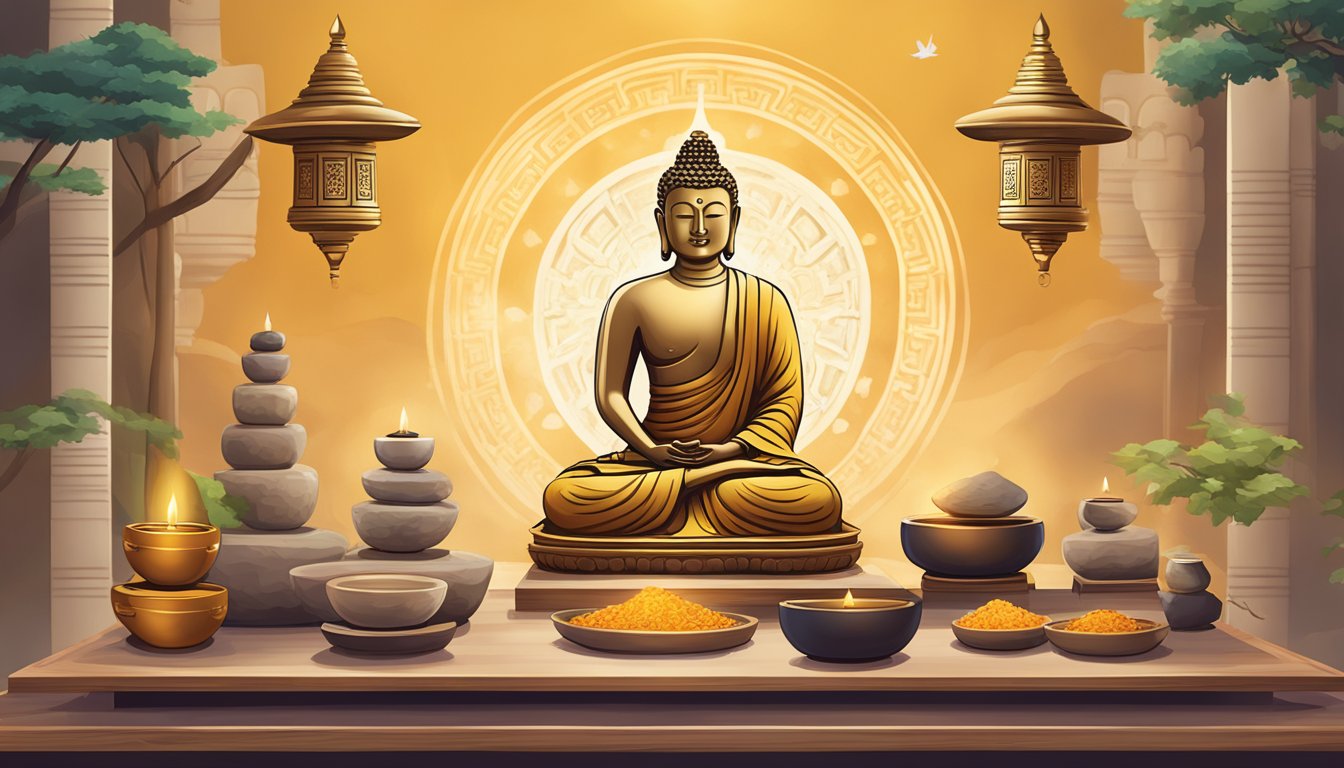
As you continue to practice meditation, you may find that incorporating aids can help deepen your practice. Here are some aids you may consider adding to your altar:
Incorporating Meditation Aids
Mala Beads
Mala beads are a traditional tool used in meditation to count mantras or breaths. They are typically made up of 108 beads and can be made from various materials such as wood, bone, or gemstones. Incorporating mala beads into your practice can help you stay focused and present during your meditation.
Singing Bowl
A singing bowl is a type of bell that produces a harmonious sound when struck or played with a mallet. The sound produced by the singing bowl can help calm the mind and aid in meditation. You can incorporate a singing bowl into your practice by using it to mark the beginning and end of your meditation session.
Understanding the Deeper Significance
Zen
Zen is a school of Buddhism that emphasizes meditation and mindfulness. Incorporating Zen teachings into your practice can help you deepen your understanding of the nature of reality and the interconnectedness of all things.
Chanting
Chanting is a practice that involves repeating a mantra or phrase. Chanting can help you focus your mind and cultivate a sense of inner peace. You can incorporate chanting into your practice by reciting a mantra or phrase during your meditation session.
Mantra
A mantra is a word or phrase that is repeated during meditation. Mantras can help you stay focused and present during your meditation session. You can choose a mantra that resonates with you and incorporate it into your practice.
Frequently Asked Questions
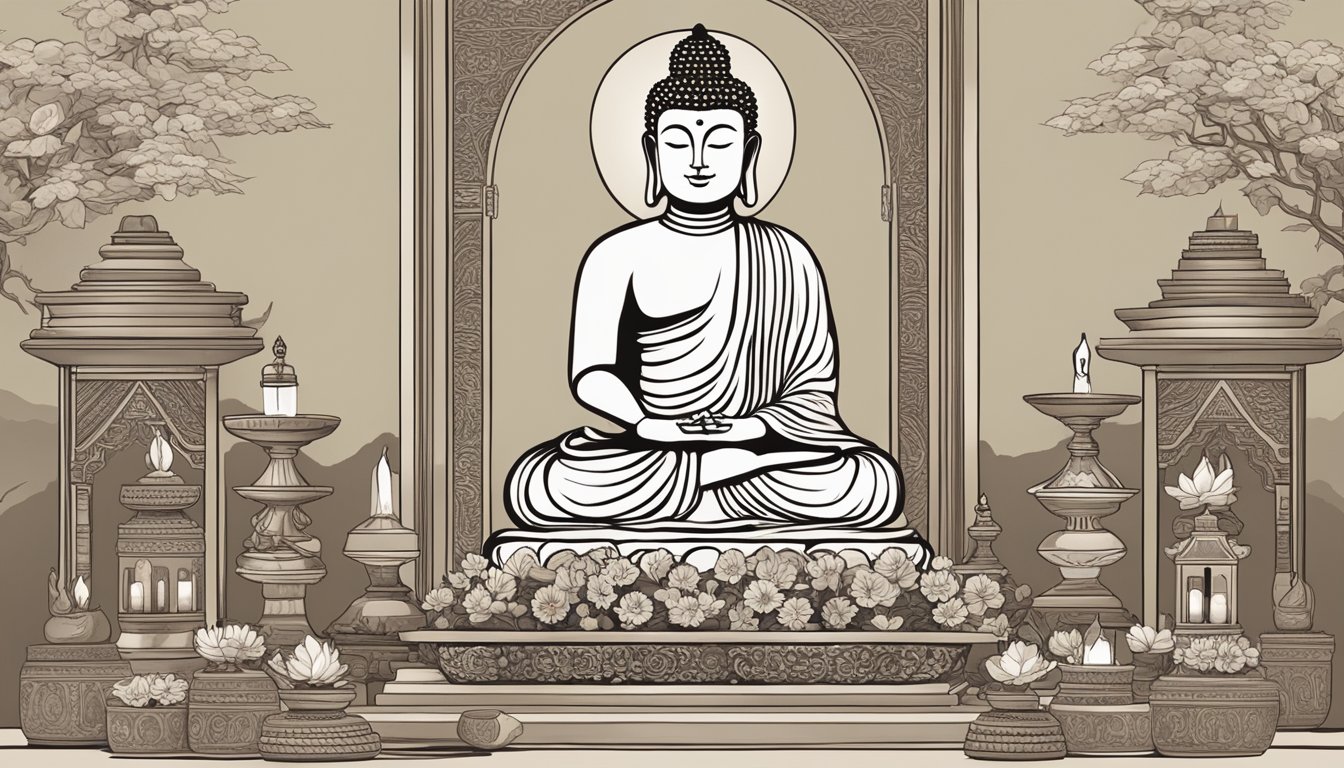
What items are traditionally placed on a Tibetan Buddhist home altar?
On a Tibetan Buddhist home altar, you will typically find a statue or picture of the Buddha, a representation of the Dharma (such as a book or scroll), and a representation of the Sangha (such as a statue or picture of a revered teacher).
Other traditional items include candles, incense, flowers, and water offerings.
How is a Buddhist altar or shrine properly set up?
When setting up a Buddhist altar or shrine, it is important to choose a location that is clean, quiet, and conducive to meditation.
The altar should be placed facing east or north, and should be at a comfortable height for the practitioner.
The Buddha statue or picture should be placed at the center of the altar, with the Dharma and Sangha representations on either side.
Other items can be arranged around these central objects, according to personal preference.
What are the common offerings made at a Buddhist shrine?
Common offerings made at a Buddhist shrine include water, flowers, incense, candles, and food.
These offerings are made as a way of purifying negative karma and generating merit.
Could you suggest some ideas for creating a Buddha altar at home?
Some ideas for creating a Buddha altar at home include using a small table or shelf as the base, placing a Buddha statue or picture at the center, and adding items such as candles, incense, flowers, and water offerings.
It is also important to choose a location that is clean, quiet, and conducive to meditation.
What is the significance of having a Buddhist altar for the deceased?
Having a Buddhist altar for the deceased is a way of honouring their memory and helping them to find peace in the afterlife.
The altar can include items such as pictures of the deceased, offerings of food and drink, and candles or incense.
What are the key components of a Butsudan Buddhist altar?
The key components of a Butsudan Buddhist altar include the Butsudan cabinet, which houses the Buddha statue or picture, and the Butsugu accessories, which include the incense burner, candle holder, and water bowl.
Other items, such as flowers and offerings, can also be included.
